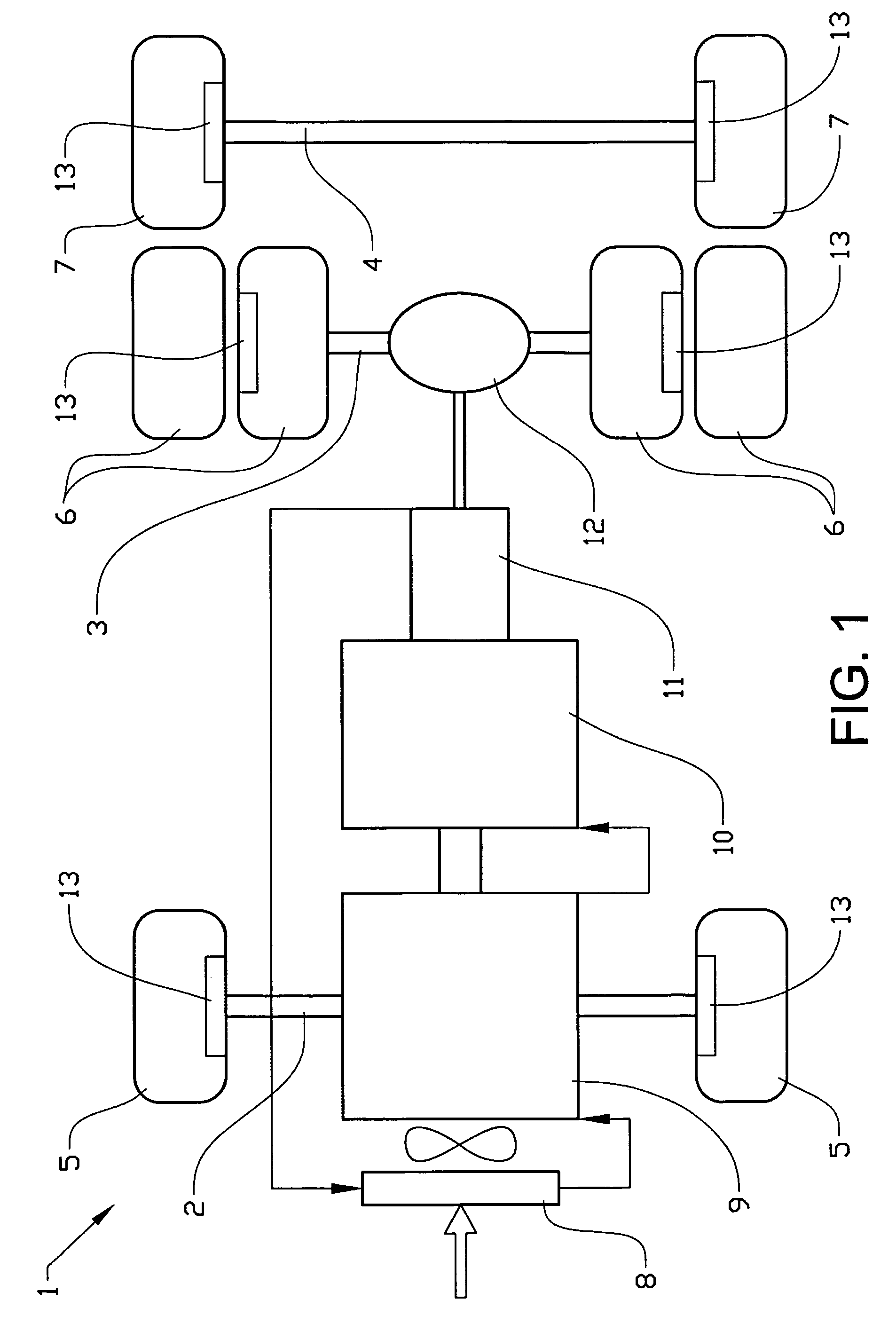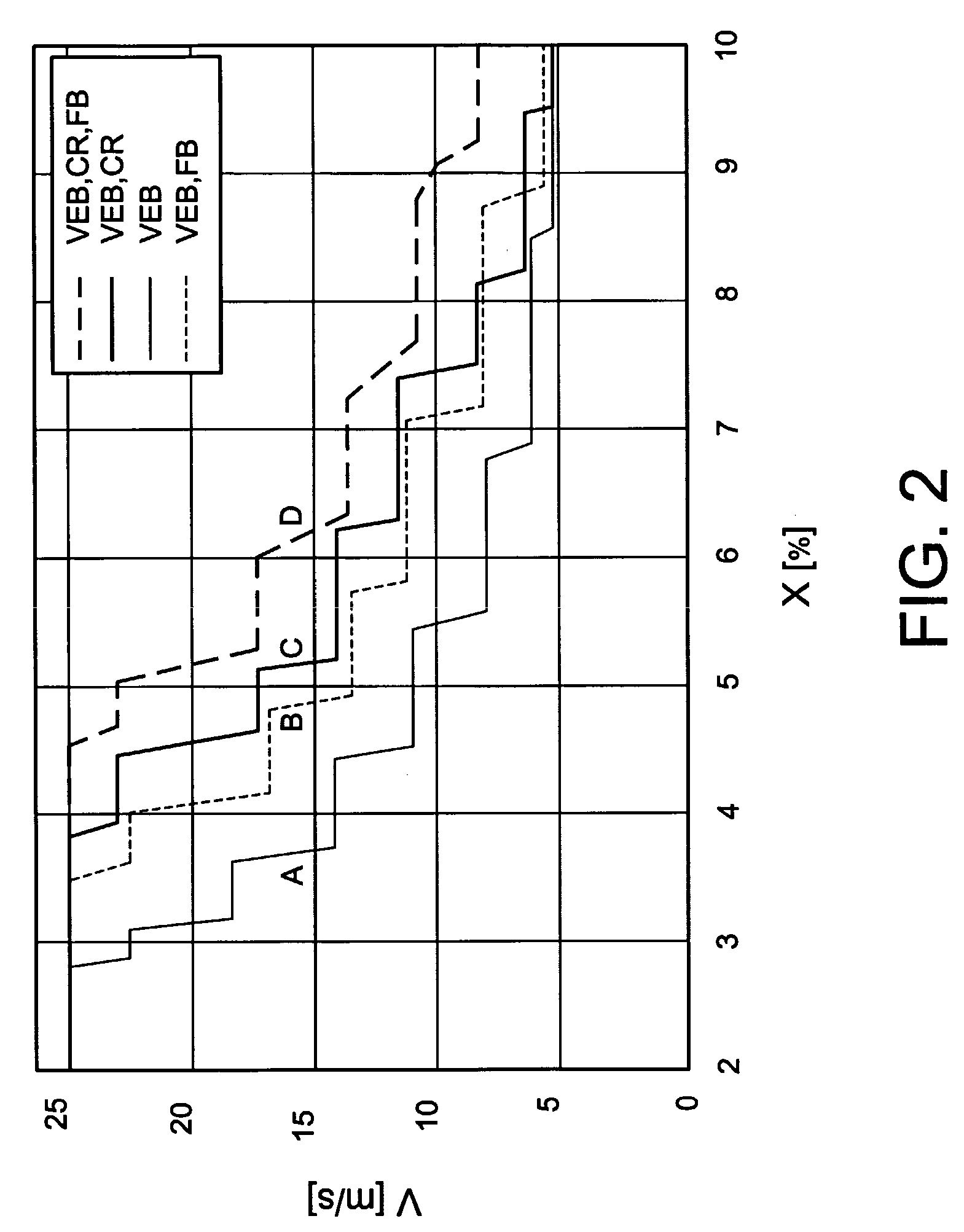Method and apparatus for the distribution of brake torque on a vehicle
a technology for distributing brake torque and vehicles, which is applied in mechanical equipment, braking systems, transportation and packaging, etc., can solve the problems of reducing braking capacity, reducing safety margins, and reducing oil flow retardation, so as to increase the overall braking performance of the vehicle, maximize the speed of the vehicle, and reduce the effect of safety margins
- Summary
- Abstract
- Description
- Claims
- Application Information
AI Technical Summary
Benefits of technology
Problems solved by technology
Method used
Image
Examples
Embodiment Construction
[0030] The illustrative embodiments of the invention described below, including different variations (developments), are to be seen only as examples and are in no way to be limiting of the scope of protection of the patent claims. In the described embodiments, disk brakes are used as an example of service brakes. It should be understood, however, that the illustrative embodiments also apply to drum brakes.
[0031] Furthermore, the designation “wheel axle” is not only used for a physical, continuous axle, but also applies to wheels that are located on a geometric axis, even though the wheels are individually suspended.
[0032]FIG. 1 diagrammatically shows a vehicle 1 with a front wheel axle 2, a first rear wheel axle 3 and a second rear wheel axle 4. Mounted on the front wheel axle 2 is a front wheel pair 5 which steers the vehicle. A first rear wheel pair 6 is mounted on the first rear wheel axle 3 which is also the driving axle of the vehicle.
[0033] The first rear wheel pair 6 consi...
PUM
 Login to View More
Login to View More Abstract
Description
Claims
Application Information
 Login to View More
Login to View More - R&D
- Intellectual Property
- Life Sciences
- Materials
- Tech Scout
- Unparalleled Data Quality
- Higher Quality Content
- 60% Fewer Hallucinations
Browse by: Latest US Patents, China's latest patents, Technical Efficacy Thesaurus, Application Domain, Technology Topic, Popular Technical Reports.
© 2025 PatSnap. All rights reserved.Legal|Privacy policy|Modern Slavery Act Transparency Statement|Sitemap|About US| Contact US: help@patsnap.com



